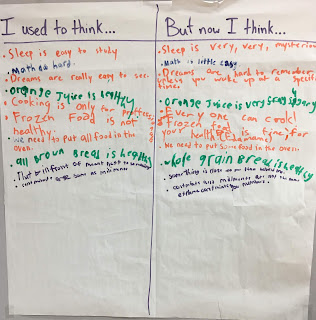Search This Blog
Magazine is to share educational news, new curriculum and more. we are one community to build a better tomorrow and it all starts here. JOIN our Online Community to do more and be a part of the change in education ! Explore, Share and Learn ! We are all Life Long Learners.
Featured
- Get link
- X
- Other Apps
5 Not-So-Common Baby Proofing Tips You Should Know baby boy crawling on floor @ExEduTODAY
5 Not-So-Common Baby Proofing Tips You Should Know

@ExEduTODAY
There are some things that are known to be absolutely essential when it comes to childproofing a home. The installation of items such as safety latches, electrical outlet covers and toilet seat locks are among those things that most of us know are critical to providing a safe home environment for baby.
But there are other preventative measures that can be taken to keep little ones protected from household hazards, and some of those strategies and dangerous items may not immediately come to mind when you start childproofing.
Here’s what you should know:
- Beware of button cell batteries – The small, round lithium
batteries used in remotes, toys and games are extremely dangerous for
baby. “If swallowed, the battery could get stuck in the esophagus where
saliva can trigger an electrical current, that causes a chemical
reaction, that can severely burn baby’s esophagus in as little as two
hours,” says Debra Holtzman, child safety expert and author of the book The Safe Baby: A Do-It-Yourself Guide to Home Safety and Healthy Living.
Use duct tape to secure the battery compartments of all items in your
home that require these batteries, and then put them out of reach.
- Be strategic with safety gates – Get your gates up before
baby becomes a crawler. When choosing gates, keep in mind that only
hardware mounted safety gates should be used at the top and bottom of
stairs in your home. Holtzman warns that a pressure bar gate (the kind
that attaches to the wall with pressure instead of screws) should never
be used at the top of stairs because it could give way if your little
one pushes on it. Those gates are best used in hallways or for
separating rooms.
- Dump the detergent pods – Those brightly colored packs of
dishwasher or laundry detergent could look like candy or juice to your
crawler or walker. “I recommend that parents avoid using laundry
detergent pods if they have children under the age of six,” says
Holtzman. Nearly 12,000 cases of laundry packet exposures involving
children under six were reported to poison control centers in 2014.
- Go cordless – Replace any blinds, shades or other window
treatments with cords as they pose a strangulation hazard to your baby.
In the nursery, create a cord-free zone near baby’s crib by keeping
corded baby monitors (and any other items with cords, strings or
ribbons) at least three feet away from any part of the crib. Apply the
same rule to any area in your home where baby naps.
- Prevent drowning hazards – Crawlers and walkers can both drown in as little as one inch of water because they are top heavy and don’t have the upper body strength needed to lift themselves out of dangerous drowning situations. That means that toilets, buckets, sinks, coolers and bathtubs can all pose an in-home drowning risk to your little one. Be sure to store all buckets upside down, empty ice out of coolers, keep toilet lids closed and use toilet seat locks, and remember to always drain water out of the bathtub. Make it a rule to always stay attentive and within arms reach whenever baby is anywhere near water.
- Get link
- X
- Other Apps
Popular Posts
7 Parenting Hacks for Traveling with Little Ones Under Two
- Get link
- X
- Other Apps
Construct the knowledge and make the thinking visible
- Get link
- X
- Other Apps

Comments
Post a Comment